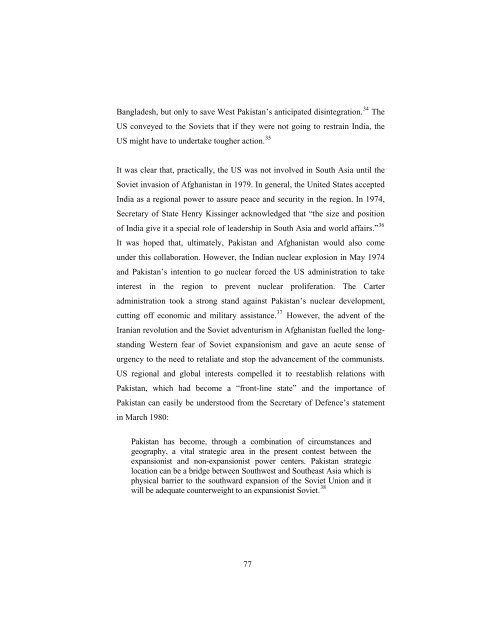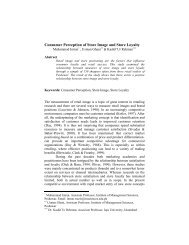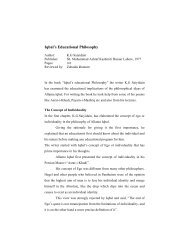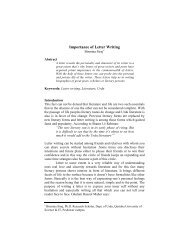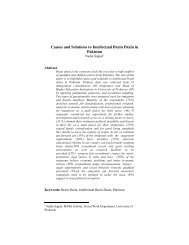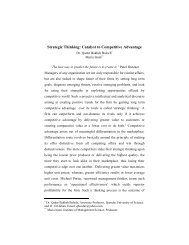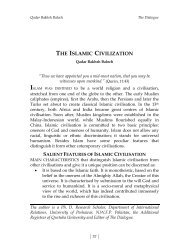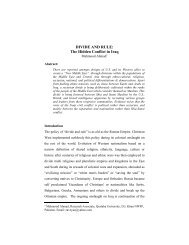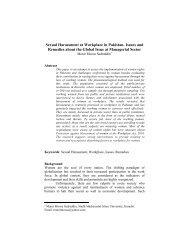COLD WAR POLITICS OF SUPERPOWERS IN SOUTH ASIA Abstract
COLD WAR POLITICS OF SUPERPOWERS IN SOUTH ASIA Abstract
COLD WAR POLITICS OF SUPERPOWERS IN SOUTH ASIA Abstract
You also want an ePaper? Increase the reach of your titles
YUMPU automatically turns print PDFs into web optimized ePapers that Google loves.
Bangladesh, but only to save West Pakistan’s anticipated disintegration. 34 The<br />
US conveyed to the Soviets that if they were not going to restrain India, the<br />
US might have to undertake tougher action. 35<br />
It was clear that, practically, the US was not involved in South Asia until the<br />
Soviet invasion of Afghanistan in 1979. In general, the United States accepted<br />
India as a regional power to assure peace and security in the region. In 1974,<br />
Secretary of State Henry Kissinger acknowledged that “the size and position<br />
of India give it a special role of leadership in South Asia and world affairs.” 36<br />
It was hoped that, ultimately, Pakistan and Afghanistan would also come<br />
under this collaboration. However, the Indian nuclear explosion in May 1974<br />
and Pakistan’s intention to go nuclear forced the US administration to take<br />
interest in the region to prevent nuclear proliferation. The Carter<br />
administration took a strong stand against Pakistan’s nuclear development,<br />
cutting off economic and military assistance. 37 However, the advent of the<br />
Iranian revolution and the Soviet adventurism in Afghanistan fuelled the longstanding<br />
Western fear of Soviet expansionism and gave an acute sense of<br />
urgency to the need to retaliate and stop the advancement of the communists.<br />
US regional and global interests compelled it to reestablish relations with<br />
Pakistan, which had become a “front-line state” and the importance of<br />
Pakistan can easily be understood from the Secretary of Defence’s statement<br />
in March 1980:<br />
Pakistan has become, through a combination of circumstances and<br />
geography, a vital strategic area in the present contest between the<br />
expansionist and non-expansionist power centers. Pakistan strategic<br />
location can be a bridge between Southwest and Southeast Asia which is<br />
physical barrier to the southward expansion of the Soviet Union and it<br />
will be adequate counterweight to an expansionist Soviet. 38<br />
77


